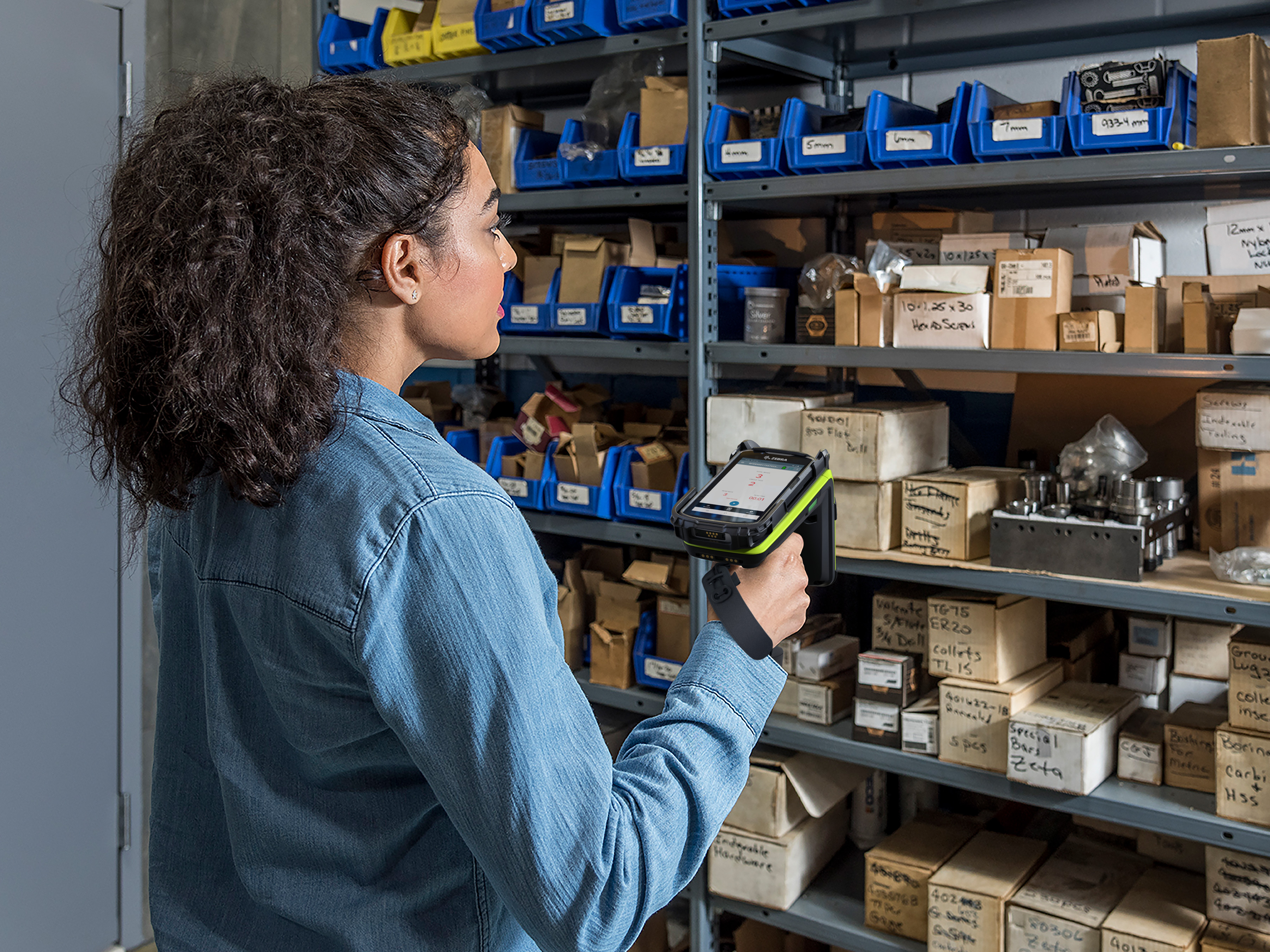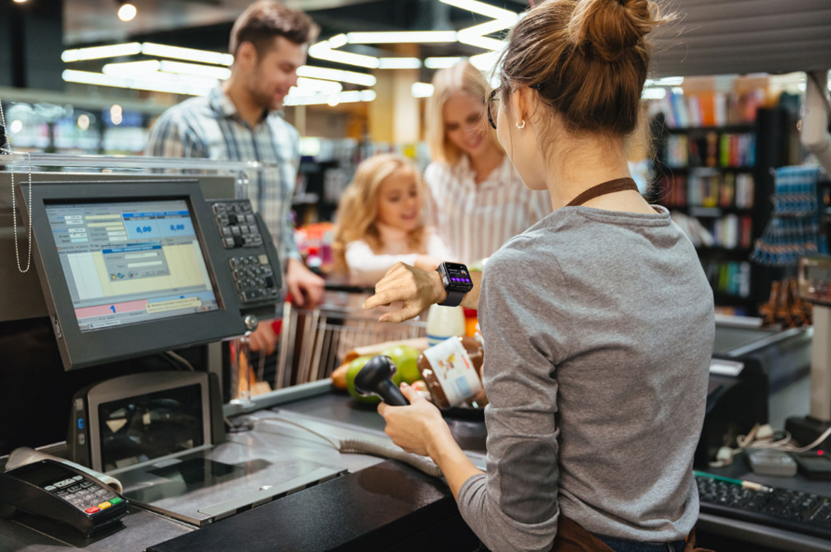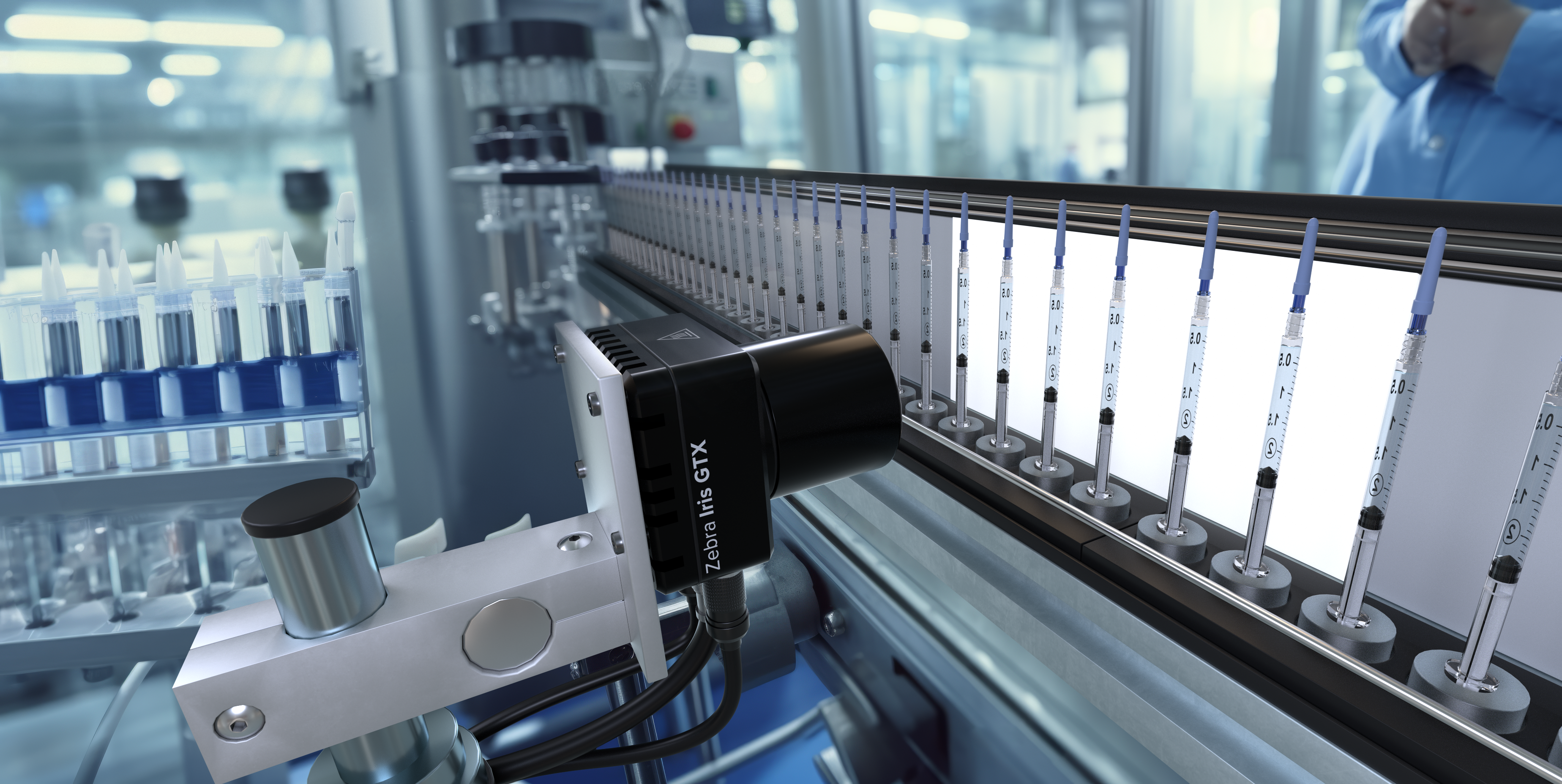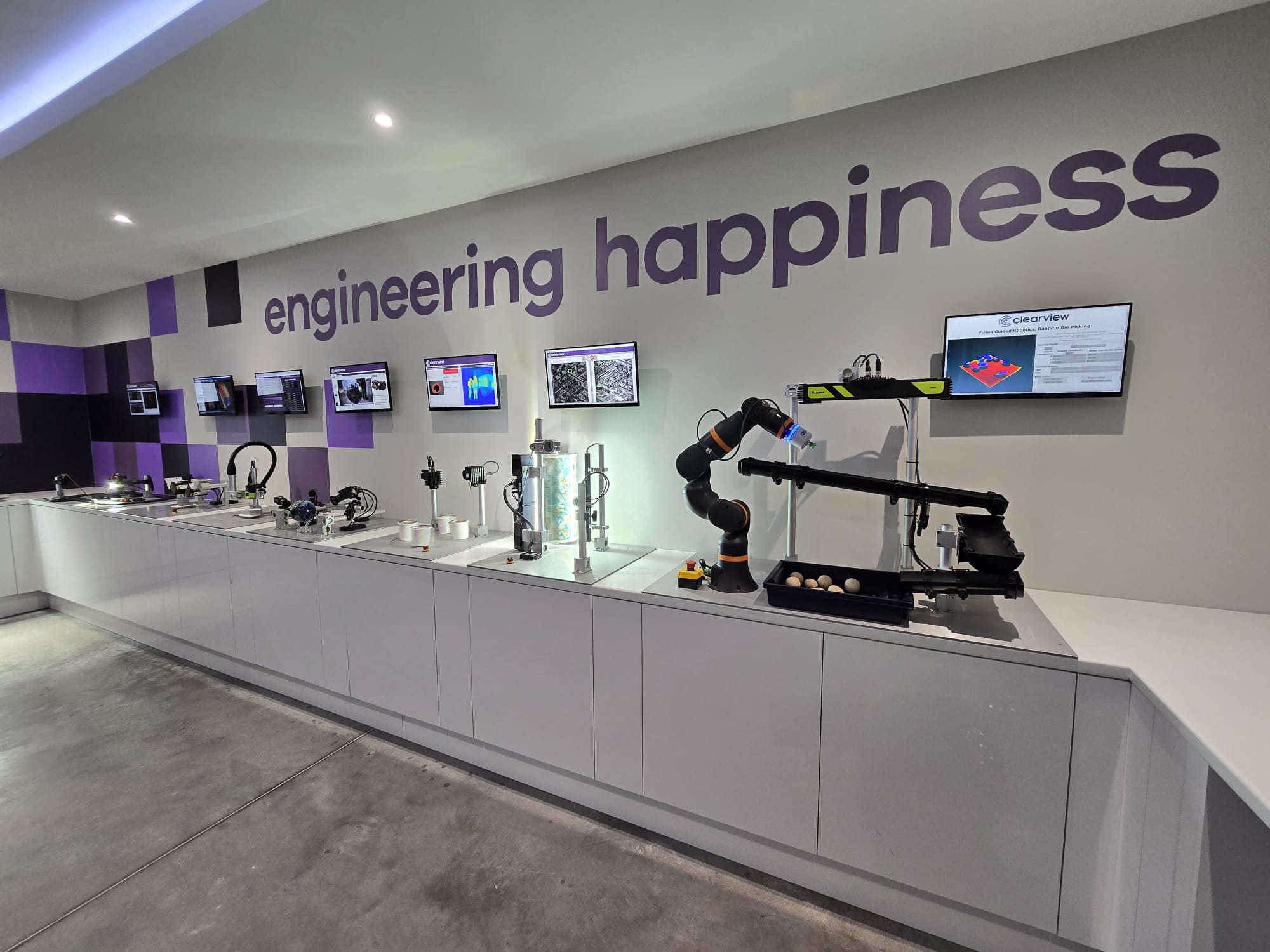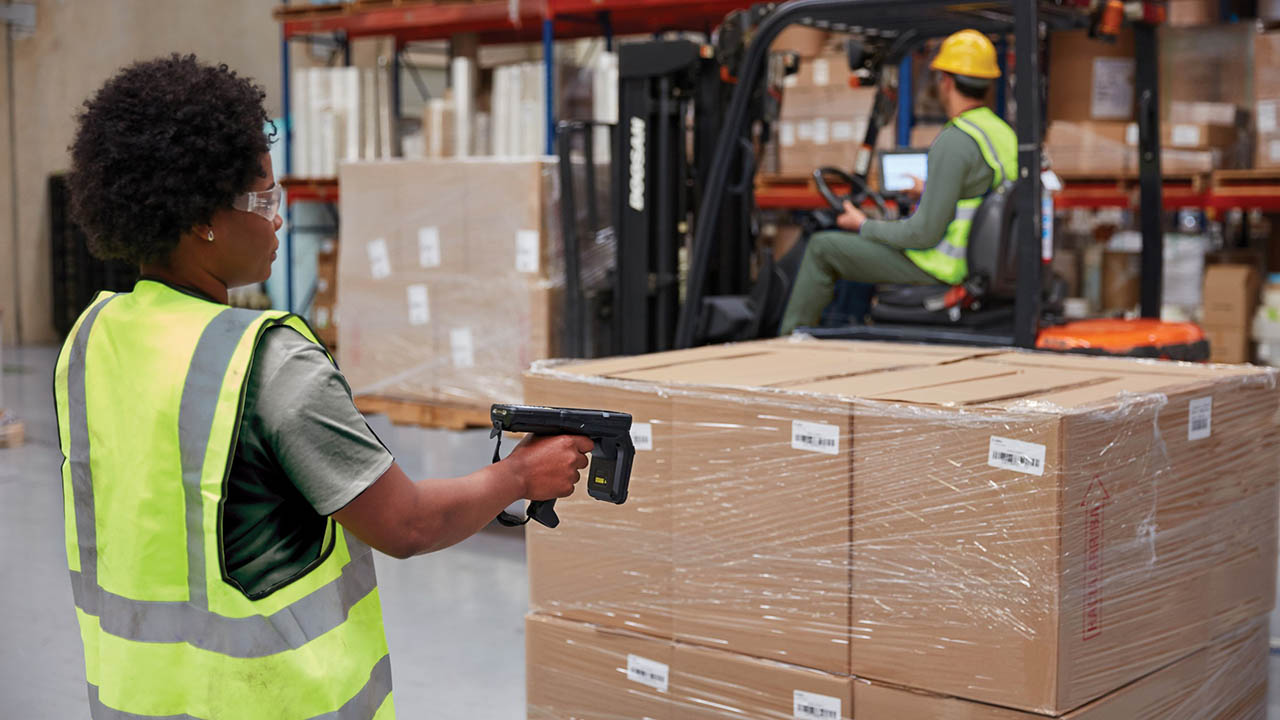Transform retail operations with Zebra’s retail technology solutions, featuring hardware and software for improving inventory management and empowering teams.
Streamline operations with Zebra’s healthcare technology solutions, featuring hardware and software to improve staff collaboration and optimize workflows.
Enhance processes with Zebra’s manufacturing technology solutions, featuring hardware and software for automation, data analysis, and factory connectivity.
Zebra’s transportation and logistics technology solutions feature hardware and software for enhancing route planning, visibility, and automating processes.
Learn how Zebra's public sector technology solutions empower state and local governments to improve efficiency with asset tracking and data capture devices.
Zebra's hospitality technology solutions equip your hotel and restaurant staff to deliver superior customer and guest service through inventory tracking and more.
Zebra's market-leading solutions and products improve customer satisfaction with a lower cost per interaction by keeping service representatives connected with colleagues, customers, management and the tools they use to satisfy customers across the supply chain.
Empower your field workers with purpose-driven mobile technology solutions to help them capture and share critical data in any environment.
Zebra's range of Banking technology solutions enables banks to minimize costs and to increase revenue throughout their branch network. Learn more.
Zebra's range of mobile computers equip your workforce with the devices they need from handhelds and tablets to wearables and vehicle-mounted computers.
Zebra's desktop, mobile, industrial, and portable printers for barcode labels, receipts, RFID tags and cards give you smarter ways to track and manage assets.
Zebra's 1D and 2D corded and cordless barcode scanners anticipate any scanning challenge in a variety of environments, whether retail, healthcare, T&L or manufacturing.
Zebra's extensive range of RAIN RFID readers, antennas, and printers give you consistent and accurate tracking.
Choose Zebra's reliable barcode, RFID and card supplies carefully selected to ensure high performance, print quality, durability and readability.
Zebra's location technologies provide real-time tracking for your organization to better manage and optimize your critical assets and create more efficient workflows.
Zebra's rugged tablets and 2-in-1 laptops are thin and lightweight, yet rugged to work wherever you do on familiar and easy-to-use Windows or Android OS.
With Zebra's family of fixed industrial scanners and machine vision technologies, you can tailor your solutions to your environment and applications.
Zebra’s line of kiosks can meet any self-service or digital signage need, from checking prices and stock on an in-aisle store kiosk to fully-featured kiosks that can be deployed on the wall, counter, desktop or floor in a retail store, hotel, airport check-in gate, physician’s office, local government office and more.
Adapt to market shifts, enhance worker productivity and secure long-term growth with AMRs. Deploy, redeploy and optimize autonomous mobile robots with ease.
Discover Zebra’s range of accessories from chargers, communication cables to cases to help you customize your mobile device for optimal efficiency.
Zebra's environmental sensors monitor temperature-sensitive products, offering data insights on environmental conditions across industry applications.
Enhance frontline operations with Zebra’s AI software solutions, which optimize workflows, streamline processes, and simplify tasks for improved business outcomes.
Zebra Workcloud, enterprise software solutions boost efficiency, cut costs, improve inventory management, simplify communication and optimize resources.
Keep labor costs low, your talent happy and your organization compliant. Create an agile operation that can navigate unexpected schedule changes and customer demand to drive sales, satisfy customers and improve your bottom line.
Drive successful enterprise collaboration with prioritized task notifications and improved communication capabilities for easier team collaboration.
Get full visibility of your inventory and automatically pinpoint leaks across all channels.
Reduce uncertainty when you anticipate market volatility. Predict, plan and stay agile to align inventory with shifting demand.
Drive down costs while driving up employee, security, and network performance with software designed to enhance Zebra's wireless infrastructure and mobile solutions.
Explore Zebra’s printer software to integrate, manage and monitor printers easily, maximizing IT resources and minimizing down time.
Make the most of every stage of your scanning journey from deployment to optimization. Zebra's barcode scanner software lets you keep devices current and adapt them to your business needs for a stronger ROI across the full lifecycle.
RFID development, demonstration and production software and utilities help you build and manage your RFID deployments more efficiently.
RFID development, demonstration and production software and utilities help you build and manage your RFID deployments more efficiently.
Zebra DNA is the industry’s broadest suite of enterprise software that delivers an ideal experience for all during the entire lifetime of every Zebra device.
Advance your digital transformation and execute your strategic plans with the help of the right location and tracking technology.
Boost warehouse and manufacturing operations with Symmetry, an AMR software for fleet management of Autonomous Mobile Robots and streamlined automation workflows.
The Zebra Aurora suite of machine vision software enables users to solve their track-and-trace, vision inspection and industrial automation needs.
Zebra Aurora Focus brings a new level of simplicity to controlling enterprise-wide manufacturing and logistics automation solutions. With this powerful interface, it’s easy to set up, deploy and run Zebra’s Fixed Industrial Scanners and Machine Vision Smart Cameras, eliminating the need for different tools and reducing training and deployment time.
Aurora Imaging Library™, formerly Matrox Imaging Library, machine-vision software development kit (SDK) has a deep collection of tools for image capture, processing, analysis, annotation, display, and archiving. Code-level customization starts here.
Aurora Design Assistant™, formerly Matrox Design Assistant, integrated development environment (IDE) is a flowchart-based platform for building machine vision applications, with templates to speed up development and bring solutions online quicker.
Designed for experienced programmers proficient in vision applications, Aurora Vision Library provides the same sophisticated functionality as our Aurora Vision Studio software but presented in programming language.
Aurora Vision Studio, an image processing software for machine & computer vision engineers, allows quick creation, integration & monitoring of powerful OEM vision applications.
Adding innovative tech is critical to your success, but it can be complex and disruptive. Professional Services help you accelerate adoption, and maximize productivity without affecting your workflows, business processes and finances.
Zebra's Managed Service delivers worry-free device management to ensure ultimate uptime for your Zebra Mobile Computers and Printers via dedicated experts.
Find ways you can contact Zebra Technologies’ Support, including Email and Chat, ask a technical question or initiate a Repair Request.
Zebra's Circular Economy Program helps you manage today’s challenges and plan for tomorrow with smart solutions that are good for your budget and the environment.
The Zebra Knowledge Center provides learning expertise that can be tailored to meet the specific needs of your environment.
Zebra has a wide variety of courses to train you and your staff, ranging from scheduled sessions to remote offerings as well as custom tailored to your specific needs.
Build your reputation with Zebra's certification offerings. Zebra offers a variety of options that can help you progress your career path forward.
Build your reputation with Zebra's certification offerings. Zebra offers a variety of options that can help you progress your career path forward.
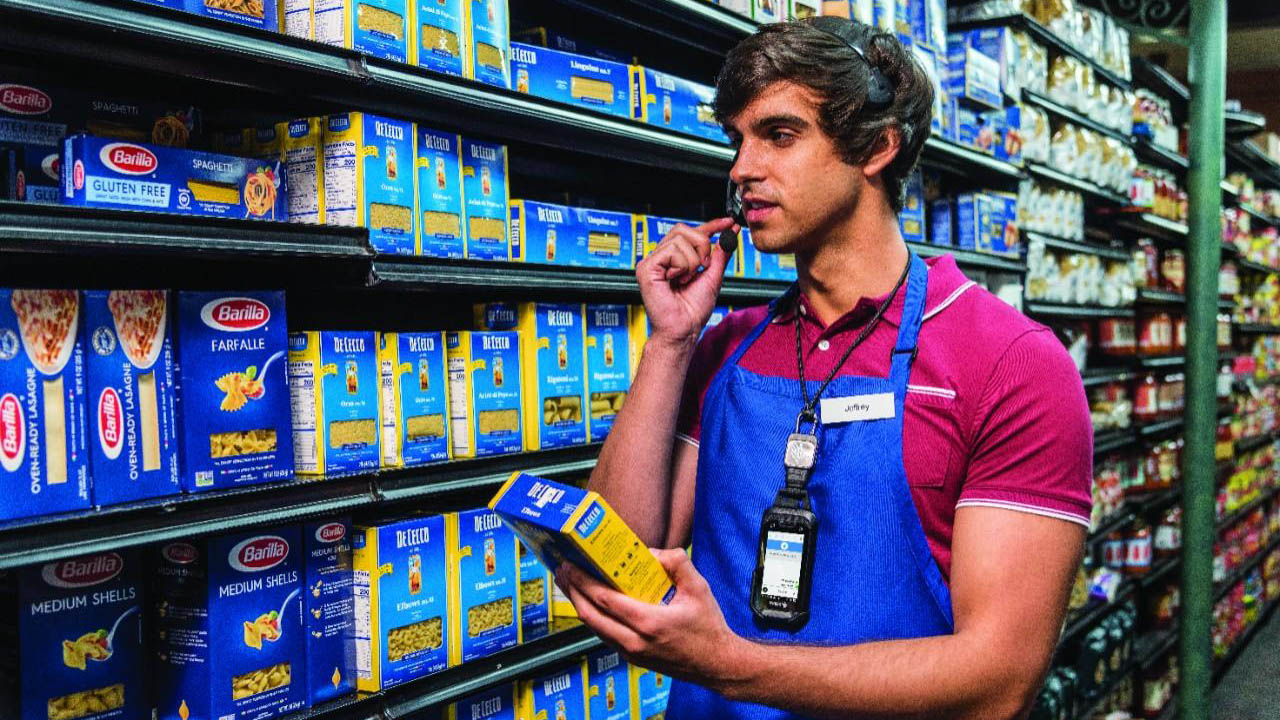
4 Critical Steps Toward Owning the Omnichannel Experience in Grocery
This post was written by Steve Paro, Chief Product Officer, Upshop, a Zebra Independent Software Vendor (ISV) Partner.
Omnichannel success is more than just table stakes in grocery these days. Integrated e-commerce and brick-and-mortar sales are urgently valuable as omnichannel shoppers spend 2-4 times more money than those who solely shop in stores. That’s why a synchronized store has become the difference between a grocer that struggles and a grocer that wins.
Major retailers are learning that streamlined end-to-end operations are critical to omnichannel profitability, and that’s driving them toward technology designed to accommodate the complexity of multiple channels. But getting to the starting line can feel almost as difficult as crossing the many different finish lines defined for the races retailers are running right now.
That’s leading some to question if retailers can successfully and sustainably own their omnichannel systems in the current market.
I can tell you based on my experience working with retailers, and grocers specifically, it is possible. However, there are four concrete “people” pillars upon which omnichannel operations must be built and managed. All involve smarter technology utilization but remind us that retail will always be a human-centric business. Let’s dig into each so you can see what groundwork you need to lay to take greater ownership of your omnichannel:
1. System Synchronization
The average retail organization uses an estimated 44 different systems to engage customers across touchpoints.
That should concern you.
How can you provide a seamless shopping experience with over 40 tech solutions working out of sync? In my experience, grocers that invest in yet another point solution promising frictionless shopping tend to end up with a tech ecosystem that’s more complex to manage, hemorrhages cash, and is difficult for employees to adopt.
Siloed platforms and legacy systems are either clunky, manual, or have difficulty integrating third-party solutions. Sometimes, they’re all the above. What’s worse is that, while they may be able to fix a single business problem, they rarely provide or support a total store solution.
This tends to occur when decision makers lose sight of how each platform must integrate with pre-existing systems and how each will affect the overall data landscape. Slapping a band-aid over every small issue just won’t cut it anymore – band-aids don’t hold very long. As a result, retailers end up spending even more time, money, and labor resources than originally planned repeatedly tending to the same issue – or secondary issues that fester as a result of the underlying problem going unresolved so long.
The real fix to nearly every business problem? Investing in solutions that sync from the start and stay synced as the overarching system grows and evolves.
The complexity of grocery omnichannel demands simplification: connected solutions that act as a total store platform, simplifying operations for the impacted shopper, retailer, and employee alike.
It’s also important to present a holistic brand experience, as haphazard conglomerations of third-party systems ultimately do not portray a unified brand. Positive customer sentiment and e-commerce performance metrics strongly correlate with owning digital assets and high rankings for ease and reliability.
So, be smart about how your store is connected. Sync up omnichannel, and win.
2. Ultimate Freshness
About 80% of any grocer’s inventory assortment will be more or less the same as competitors’ assortments. So, how do you differentiate yourself?
Nailing the fresh perimeter is key.
Contemporary shoppers place high value on fresh products. At the start of the pandemic, 75% of consumers were willing to pay a premium for fresh food, and over half of them increased fresh purchases significantly. Consumers will choose which store has a better fresh selection every time, meaning fresh operations are critical to driving and securing long-lasting shopper loyalty.
But for the fresh perimeter to work and work well, your entire store operation must sync up. Consider how much of your fresh operation crosses multiple departments: fresh ordering, production planning, recipe management, inventory and waste management, and expiration date tracking. The corresponding technology systems fuel and affect one another. When they sync — intentionally and comprehensively — the entire perimeter benefits, as do your shoppers and bottom line.
Take made-to-order and e-commerce fulfillment functions. Associates waiting for online orders in line at the deli will likely lead to annoyed customers, flustered staff, and a hassle you wouldn’t have to deal with if made-to-order and e-commerce fulfillment operations were integrated within the total store system. Linking the two functions technologically speaking means online orders that include pre-made items can go quicker, and the customer experience can be prioritized.
In other words, ensure the freshest perimeter by investing in capable tech. Your customers and employees will thank you.
3. Optimized Online Assortment
Retailers set out to build an e-commerce assortment as robust as their in-store selection. But when it comes to the complexities of online retail models, providing identical inventory is a difficult task.
One significant snag in the grocery space is the planning and management of freshly prepared items. Offering made-to-go and pre-made online items creates a complicated fulfillment challenge when it comes to labor, timing, and the quality of fresh food. As a result, many grocers would rather exclude pre-made selections from e-commerce channels entirely but doing so means they’re running the risk of disappointing online shoppers. Seven-in-10 fresh departments say they have a clear seat at the table in making strategic overall e-commerce decisions – decisions that should keep in mind shoppers who want fresh in-store items in their online orders.
Another roadblock arises when retailers introduce automation capabilities. The increased prevalence of micro fulfillment centers (MFCs) and dark stores means significant upticks in automation, often at the expense of assortment. Automated fulfillment facilities are great for cutting labor costs and optimizing workflows, but they offer new assortment challenges that might drive retailers to reduce selection in order to match technical limits.
The temptation to reduce inventory offerings is strong, especially fresh goods. But grocers should seriously consider the implications on shopper loyalty and satisfaction. Customers want what they want and expect consistent value across online and in-store channels. Building a digital assortment involving less fresh selection may alienate shoppers from trying out a new channel and, ultimately, impact e-commerce success.
4. Qualified People
One of the most strenuous positions in the modern grocery store is the online order picker, who spends day after day walking miles up and down store aisles ensuring that orders placed online get filled correctly, on time, and to the satisfaction of the customer. And the expectations of that customer will be higher than usual.
An in-store shopper can choose which apple looks the tastiest. The online consumer expects this decision will be made to their taste by the employee picking their order. Food is personal, after all, and online shoppers expect retailers to fill their orders thoughtfully and carefully — putting major pressure on associates.
Why not set these employees up for success right from the start?
E-commerce fulfillment technology should ensure continued shopper loyalty while instantly equipping the workers taking on the role of “picker” with a new skill set. Though technology should be empowering – enabling front-line workers to float from one role to the next without extensive training. Too often does tech get in the way of the employees doing their best job. Associates picking online orders fuel an incredibly important sector of omnichannel, and they deserve a reliable mobile computing solution with an adaptable user interface (UI) that makes their jobs easier. Any investment in technologies meant to streamline e-commerce operations should simplify, spotlight, and optimize e-commerce labor.
Start thinking of employee adoption as a return on investment (ROI) metric. True technology solutions will account for the complexity of omnichannel labor and facilitate clear communication between your customers and employees. They will also help you keep associates happy and retained in their e--commerce roles, which is undeniably valuable, especially in this fraught labor market.
Omnichannel: The Non-Negotiable Battleground
Shopper needs, perceptions, and behaviors are constantly in flux, so it’s in your best interest to provide matching fluidity.
If you want to fully own your omnichannel model and successfully establish yourself – in customers’ eyes – as the go-to grocer/retailer, you must:
Ensure all technology systems are thoughtfully integrated to support seamless shopper experiences.
Build an omnichannel solution that maximizes product freshness.
Optimize assortment without perceived sacrifices.
You must also ensure you’re giving front-line and sideline associates the right tools – tools that empower them to be the heroes of consumers’ shopping experiences. If technology performance issues end up relegating associates to the bench – meaning shoppers feel the only way they’ll “win” is if they do the shopping themselves – then it’s going to be impossible to gain a competitive edge in today’s retail environment.
So, take the time to plan out your strategy. Consult with experts who understand the grocery/retail business and the role technology can and should play in that business. Let them guide you through the platform selection, system integration and change management processes so that you achieve the ROI you desire now and in the future.
###
About the Author
Steve Paro is Chief Product Officer at Upshop. Steve, a product development and technology veteran, joined Upshop during the ShopperKit acquisition bringing with him more than two decades of experience in delivering retail supply chain, e-commerce and logistics technology solutions. Prior to Upshop, Steve was ShopperKit’s Chief Technology Officer and Managing Partner of VelocityChain. Today, he is a critical driver of Upshop’s strategic product roadmap, which includes the development of the omnichannel services fulfillment platform and the integration of multiple leading store technologies – FreshIQ, Itasca’s MagicTM, Date Check Pro, and ShopperKit -- into the Upshop Total Store Operations Experience.
###
Related Reads:
Some Say Technology is the Key to Retaining Grocery Workers. Here’s What We Know.
Industry Insights: Grocery Stores are Becoming Smarter, and Grocers are Becoming Wiser
Zebra Developer Blog
Zebra Developer BlogZebra Developer Blog
Are you a Zebra Developer? Find more technical discussions on our Developer Portal blog.
Zebra Story Hub
Zebra Story HubZebra Story Hub
Looking for more expert insights? Visit the Zebra Story Hub for more interviews, news, and industry trend analysis.
Search the Blog
Search the BlogSearch the Blog
Use the below link to search all of our blog posts.
Most Recent
Legal Terms of Use Privacy Policy Supply Chain Transparency
ZEBRA and the stylized Zebra head are trademarks of Zebra Technologies Corp., registered in many jurisdictions worldwide. All other trademarks are the property of their respective owners. ©2025 Zebra Technologies Corp. and/or its affiliates.

